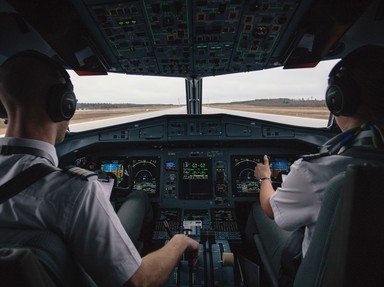Quiz Answer Key and Fun Facts
1. The first thing you may want to know is how a giant metal tube with wings flies in the first place. What is the name of the scientific law that roughly explains how an airplane flies?
2. Before take off, it is important for pilots to check the weather report. Which instrument needs to be adjusted whenever there is a change in air pressure?
3. When an air traffic controller instructs a pilot to "squawk 1500", what should he/she do?
4. The air traffic controller instructs the aircraft to taxi to runway 9L. How is a runway number most often determined?
5. After takeoff, the controller instructs the pilot to climb to 5,000 feet and intercept MIKEY. What should the pilot do?
6. There are several different ways to 'steer' an airplane. Which of the following is NOT an apparatus that is used for flight control?
7. Do you know how to yaw a plane? If the pilot wanted to execute a yaw, how would he/she do it?
8. As the plane begins its descent, it must also reduce air speed to prepare for landing. What part of the aircraft is used at slow speeds in order to maintain its lift?
9. As you fly closer to the arrival airport, air traffic control may ask the pilot to follow a STAR. What is the pilot being asked to do?
10. As the aircraft gets closer to the ground, it is necessary for the pilot to 'flare' the aircraft before it lands. What does flare mean?
Source: Author
RedHook13
This quiz was reviewed by FunTrivia editor
stedman before going online.
Any errors found in FunTrivia content are routinely corrected through our feedback system.
